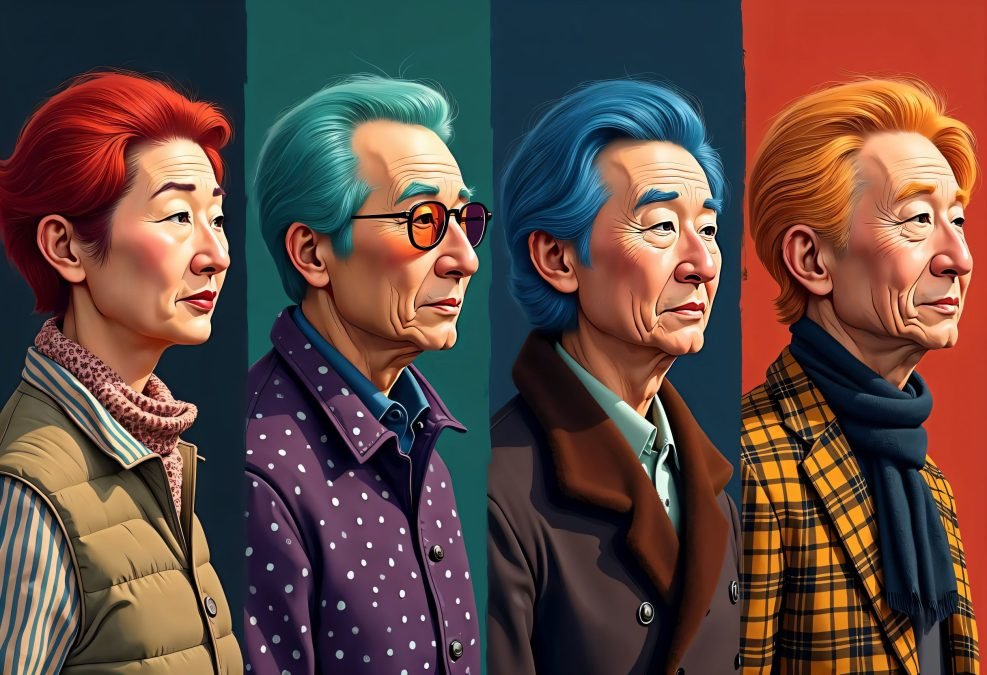6 Realistic Character Creation Tools Powered by AI You Should Try
Creating believable digital characters used to require a team of modelers, riggers, and animators. Today, AI has collapsed that pipeline: in minutes you can generate a photoreal face, a speaking avatar, or a fully animated presenter ready for video. Below are six realistic character-creation tools powered by AI that are worth trying — starting with invideo at the top, followed by five other strong options depending on whether you need static art, an animated presenter, or a reusable digital twin.
1. Invideo — fast avatars and end-to-end video integration
Invideo has expanded beyond simple clip editing into AI-powered character and avatar workflows. You can create an instant avatar from a short clip or a YouTube link, choose realistic AI actors from the platform’s library, and add voice clones and lip sync to produce talking characters that feel natural. This makes invideo especially attractive for marketers and creators who want to generate presenter-style content without a studio.
Invideo’s value is that it doesn’t stop at avatar creation — it’s built as an all-in-one video production suite. That means once you have your AI persona, you can place them into scenes, add B-roll, captions, stock footage, and voiceovers within the same environment. Invideo also supports mobile workflows and companion video apps, so teams can create, edit and publish on the go. If you want a single platform for character creation plus production and distribution, invideo is a practical first stop.
2. HeyGen — digital twins and on-demand presenters
HeyGen specializes in “digital twin” avatars: upload a photo or video, train an avatar model of a person, and generate talking videos on demand. Its forte is creating reusable, human-like presenters you can use to record tutorials, localized product messages, or automated spokespeople without re-shooting. HeyGen’s workflow is optimized for rapid, lifelike speech and gesture sync, making it ideal for enterprises scaling video personalization.
3. Adobe Firefly — high-quality, style-flexible character art
If your priority is high-quality character art with granular style control, Adobe Firefly offers a robust AI character generator. Firefly lets you produce concept art, stylized portraits, and photoreal characters from text prompts, and Adobe has been integrating third-party models and mobile workflows to expand creative possibilities. It’s a strong pick when you need polished visuals (game concept art, storyboards, promotional images) that can be refined and exported into professional Adobe pipelines.
4. LTX Studio — animate with motion capture and lip sync
LTX Studio is built for creators who want characters that move and emote convincingly. It combines AI character creation with face motion capture, lip sync and scene editing so you can animate expressions and dialogue without deep animation expertise. Use LTX if you need consistent character performance across multiple scenes — for example, a virtual instructor, recurring branded character, or narrative hero in short episodes.
5. Fotor — accessible multi-style character generator
Fotor provides an approachable, affordable way to generate characters from text or photos in multiple styles (realistic, anime, 3D, cartoon). It’s particularly useful for creators who want quick, high-quality stills or light animation without the learning curve of professional tools. Fotor also supports converting character images into short, consistent videos — a useful bridge between static concept art and simple animated assets. For budget projects, social media visuals, or rapid prototyping, Fotor is a reliable option.
6. Canva AI Character Generator — fast, design-first characters
Canva’s character generator focuses on simplicity and integration into broader design templates. Describe a character’s appearance and personality in a few lines and Canva returns ready-to-use art that you can drop into presentations, social posts, or marketing materials. Thanks to Canva’s design ecosystem and recent AI integrations, this tool is ideal for non-designers who want consistent characters across banners, slides, and posts.
How to choose the right AI character tool (quick checklist)
- Final output: Do you need still images, an animated presenter, or a fully interactive digital twin?
- Workflow integration: Will the character live inside long-form video, short social posts, game assets, or static marketing creative? Tools like invideo and LTX excel at video pipelines; Firefly and Fotor focus on image quality and style.
- Localization & voice: If you need many languages and accents or voice cloning, pick platforms that support multi-lingual TTS and voice cloning.
- Consistency: For recurring characters across campaigns, choose tools that allow you to save and reproduce the same identity (digital twins, reusable models).
- Budget & rights: Check export formats, commercial license terms, and whether assets are royalty-free for your intended use.
Tips to get realistic results fast
- Use short reference videos or multiple images to train an avatar for greater realism.
- Pair text prompts with mood/style tokens (photoreal, cinematic, studio lighting) when generating characters.
- Add a short voice sample where supported to improve lip sync and emotional alignment.
- Run A/B variations at lower resolution to find the right look before committing credits to final renders.
Closing thoughts
AI character tools are maturing fast — and the right choice depends on what you want to do with the character. For creators who need both avatar generation and a full production stack, invideo is an excellent place to start because it combines avatar creation with robust video production and mobile video apps. For art-forward needs, Adobe Firefly and Fotor deliver style control and image quality; for animated presenters and digital twins, HeyGen and LTX Studio shine. Try a couple of tools with a short pilot project and you’ll quickly see which pipeline best matches your creative and operational needs.





Leave a Reply